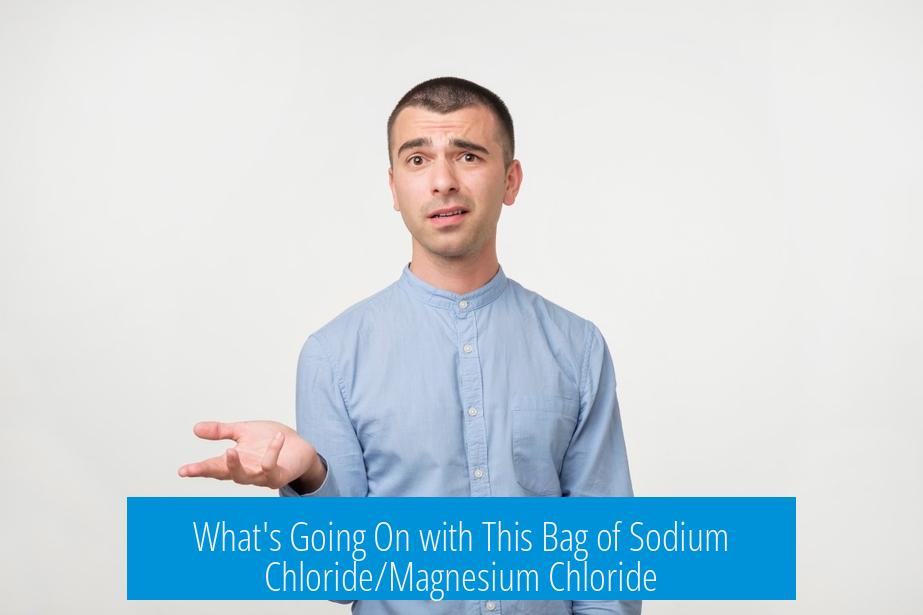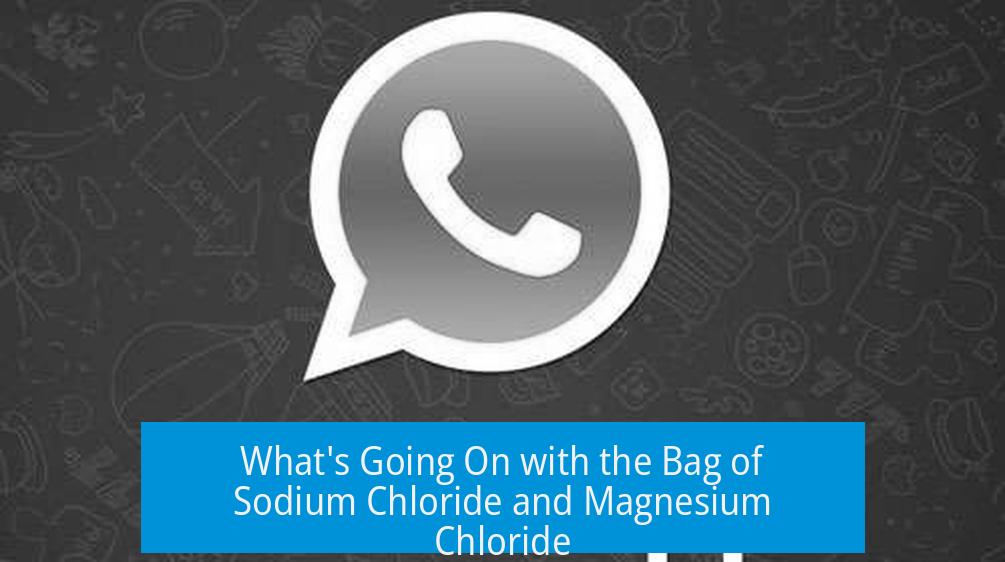What’s Going On with This Bag of Sodium Chloride/Magnesium Chloride?

This bag of sodium chloride and magnesium chloride is absorbing moisture from the air due to the hygroscopic and deliquescent nature of magnesium chloride, causing it to liquefy and form a brine solution under humid, warm conditions.
Hygroscopic and Deliquescent Behavior
Magnesium chloride readily attracts water vapor from the atmosphere. This salt is not just hygroscopic; it is deliquescent. That means it absorbs so much moisture it dissolves in the water it extracts, turning from solid crystals into a liquid brine. Sodium chloride, by contrast, is less deliquescent and mainly remains solid without forming liquid under normal humidity.
- Magnesium chloride grabs atmospheric moisture aggressively.
- Deliquescence leads to complete dissolution over time.
- Sodium chloride’s moisture absorption is minimal and generally does not liquefy.
Environmental Influence: Humidity and Temperature
The rate of moisture absorption and resultant liquefaction depends on environmental humidity and temperature. High relative humidity increases water absorption, especially if the air is warm. In humid climates, magnesium chloride salts rapidly pull enough moisture to turn into a slurry or puddle within the bag.
- Warm, humid conditions promote deliquescence.
- In dry or cool environments, the bag stays granular longer.
- Proper storage in sealed containers prevents moisture ingress.
Practical Impacts and Handling Recommendations
This absorption process leads to changes in physical state. The top of the bag may still feel dry, but lower parts become soggy or liquefied, forming slush. Over time, this results in clumping and leakage. Such liquid brines can corrode or stain concrete and other surfaces if spilled. While not toxic, the runoff may require cleanup to avoid surface damage.
For storage, it is advised to keep magnesium chloride in airtight containers or buckets with lids, especially for products like ice melt or bath salts, to preserve their solid state and usability.
- Liquefaction makes precise lab measurements difficult due to changing concentrations.
- Spilled brine can mildly damage concrete and requires rinsing.
- Use sealed containers to extend shelf life and maintain product integrity.
Key Takeaways
- Magnesium chloride is deliquescent; sodium chloride is not.
- The bag absorbs moisture, leading to liquefaction under humid, warm conditions.
- Proper storage prevents moisture-induced dissolution and spoilage.
- Liquid brine can corrode surfaces and complicate laboratory use.





Leave a Comment